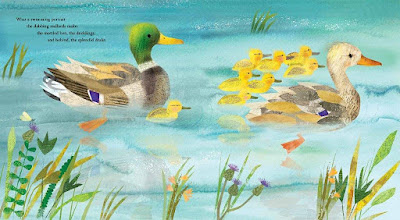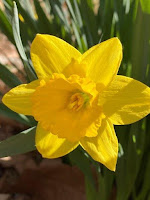Ribbit!
by Annette Whipple; illus. by Juanbjuan Oliver
32 pages; ages 6-9
Reycraft Books, 2022
theme: frogs, adaptations, ecology
Who’s hopping?
This is a great introduction to frogs, filled with photos that will make you want to head to the nearest pond to go frog-watching. Annette Whipple answers pressing questions, including: what is the difference between frogs and toads? She shows how frogs eat, where they live, how they make sounds, and their development from eggs to adults.
What I like about this book: I love the close-up photos of legs and eyes and tongues. And the “Leaping Legs” sidebars with cartoony frogs that explain more, from a frog’s point of view. There is great back matter, too: frog-watching tips, a “fact or fiction” quiz, and instructions for a make-it-yourself toad abode.
I caught up with Annette between hops a couple weeks ago, long enough to ask her Two Questions:
me: After doing all the research for this book, what’s your favorite froggy fact?
Annette: When I think about the most amazing thing about frogs I’ve learned, I think about so many froggy facts. Like how scientists have recently been finding more than 100 new species each year. (At the time of this writing, 38 new species of amphibians have been located in 2022. Most of those are frogs!) Or how frogs don’t just eat insects. They eat anything that fits in their mouth – birds, mice, and even other frogs. Or how the Couch’s spadefoot can survive with just one big meal of termites for the entire year but the American toad has been recorded to eat more than 1,000 bugs in a single day.
There’s such variety in frogs. I think the possible coolest thing I’ve learned is that some frogs like wood frogs and spring peepers are designed to freeze during the winter. The sugar in their blood acts like an antifreeze. When their icicle bodies thaw during the spring--the frog lives to tell about it!
me: Can you share a memorable frog encounter?
Annette: It happened when I met a group of wood frogs. As I approached a pond with a herpetologist, I heard quacking. When I was about five feet from the pond, the quacking stopped. We stayed motionless at the pond’s edge for several minutes and spoke in hushed tones. Eventually the quacking began again – without a duck in sight. The pond was a preferred breeding ground for wood frogs. Their mating calls sound like duck quacks! I had learned of quacking wood frogs in my research, but it’s always so much better to experience it in person.
Beyond the Books:
Play a game of leap frog. One way is to use carpet squares as lily pads, and leap from lily pad to lily pad. Another way is to line up and have a leaping race. Then there’s the traditional leap frog game.
Here’s the rules.
Go on a frog-watch. Ponds are great places to find frogs, but check grassy yards and parks. I’ve even found tree frogs hanging out in shrubs at the edge of a parking lot!
Hold a Jumping Contest with your friends. Can you leap like a frog? Some frogs can jump 20 times the length of their bodies – how far would you have to jump? Draw a chalk starting line, or lay a rope on the ground, and on “GO” have everyone do their best froggy leap. Then measure the distances. Here’s
more frog-jumping activities.
Learn to speak like a frog. Listen to some frog recordings (
here and
here) and pick up some tips on how to sound like a frog.
Annette is a member of #STEAMTeam2022. You can find out more about her
at her website.
Today we're joining Perfect Picture Book Friday, an event where bloggers share great picture books at
Susanna Leonard Hill's website.
Review e-galley provided by the author.




















.jpg)











